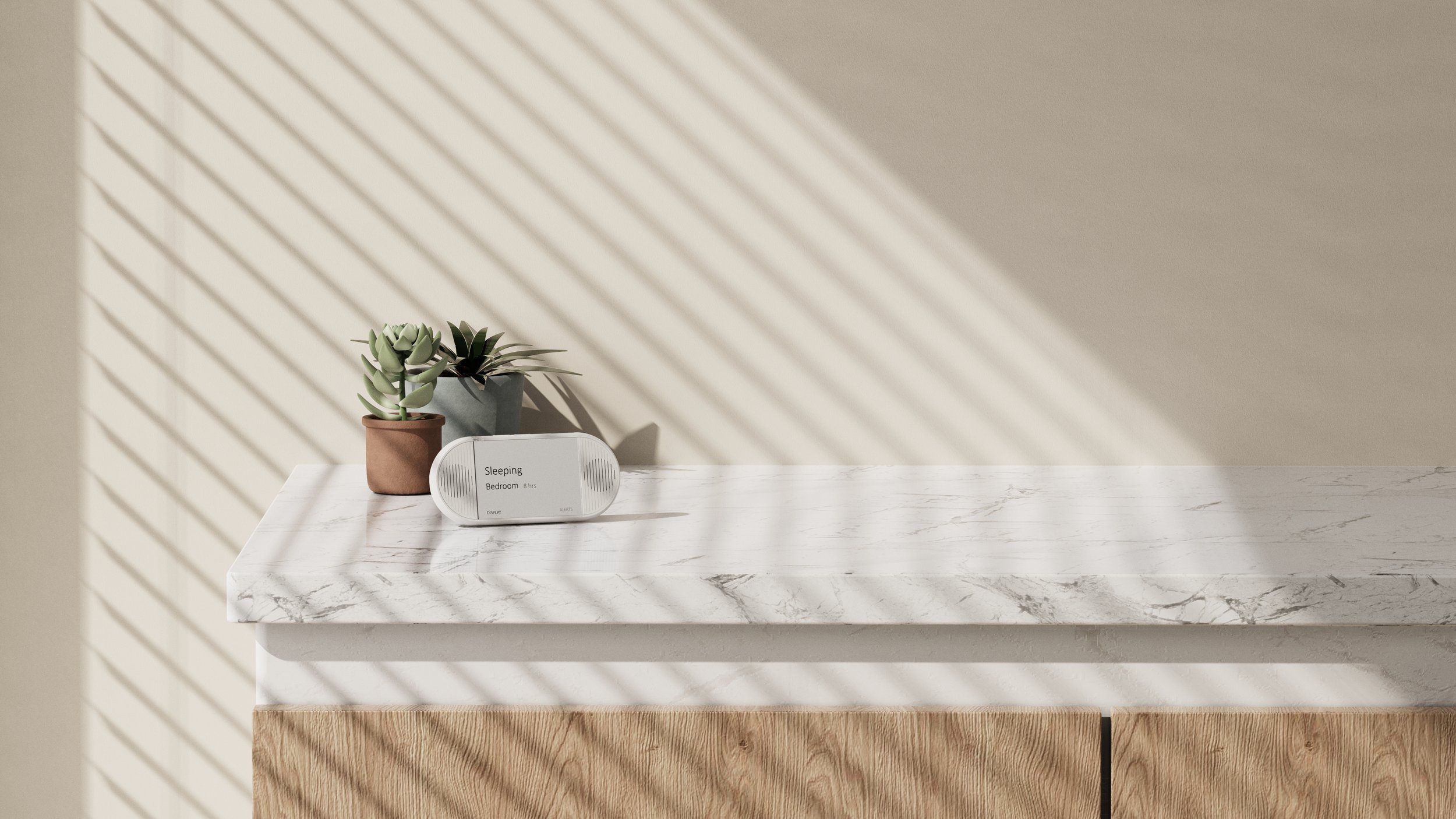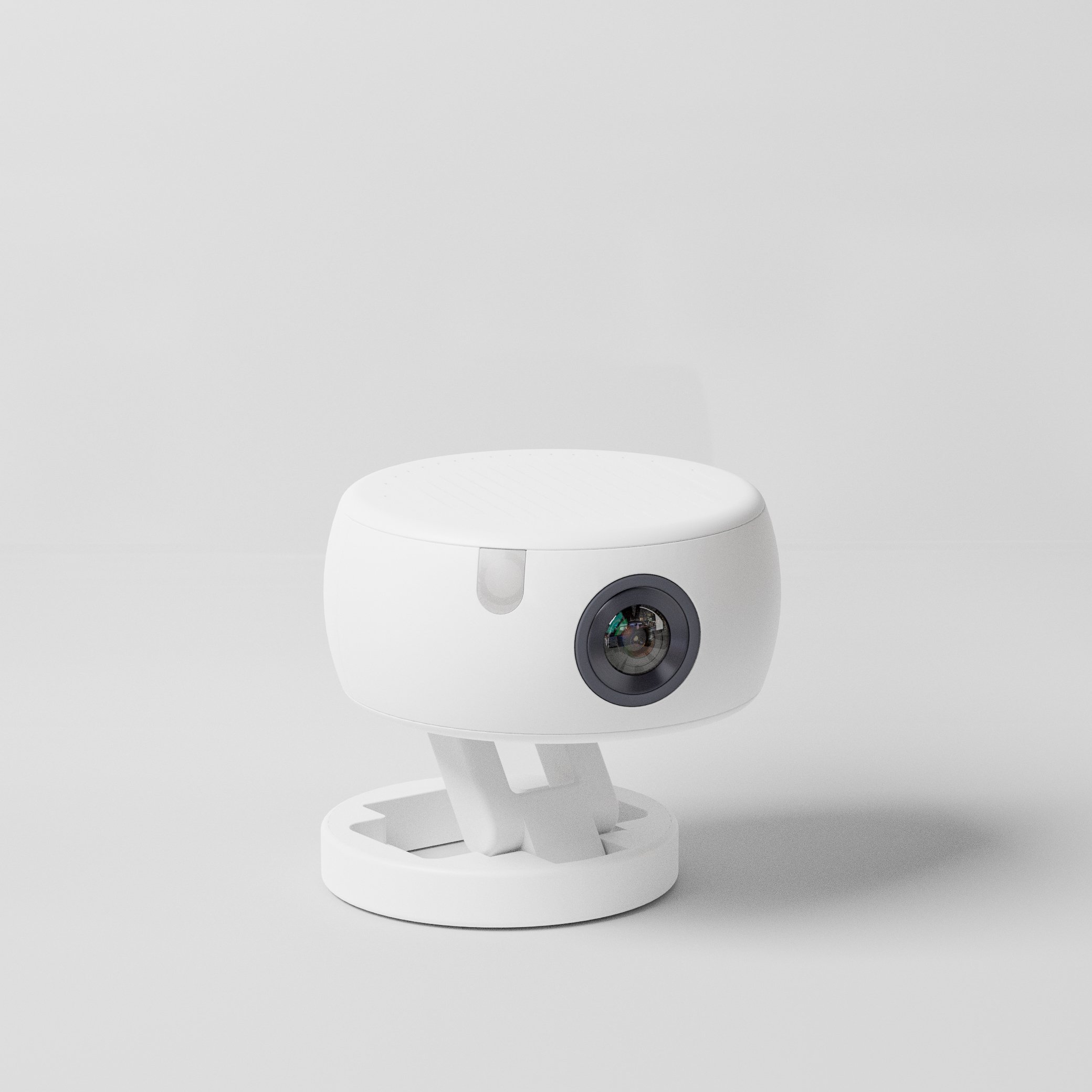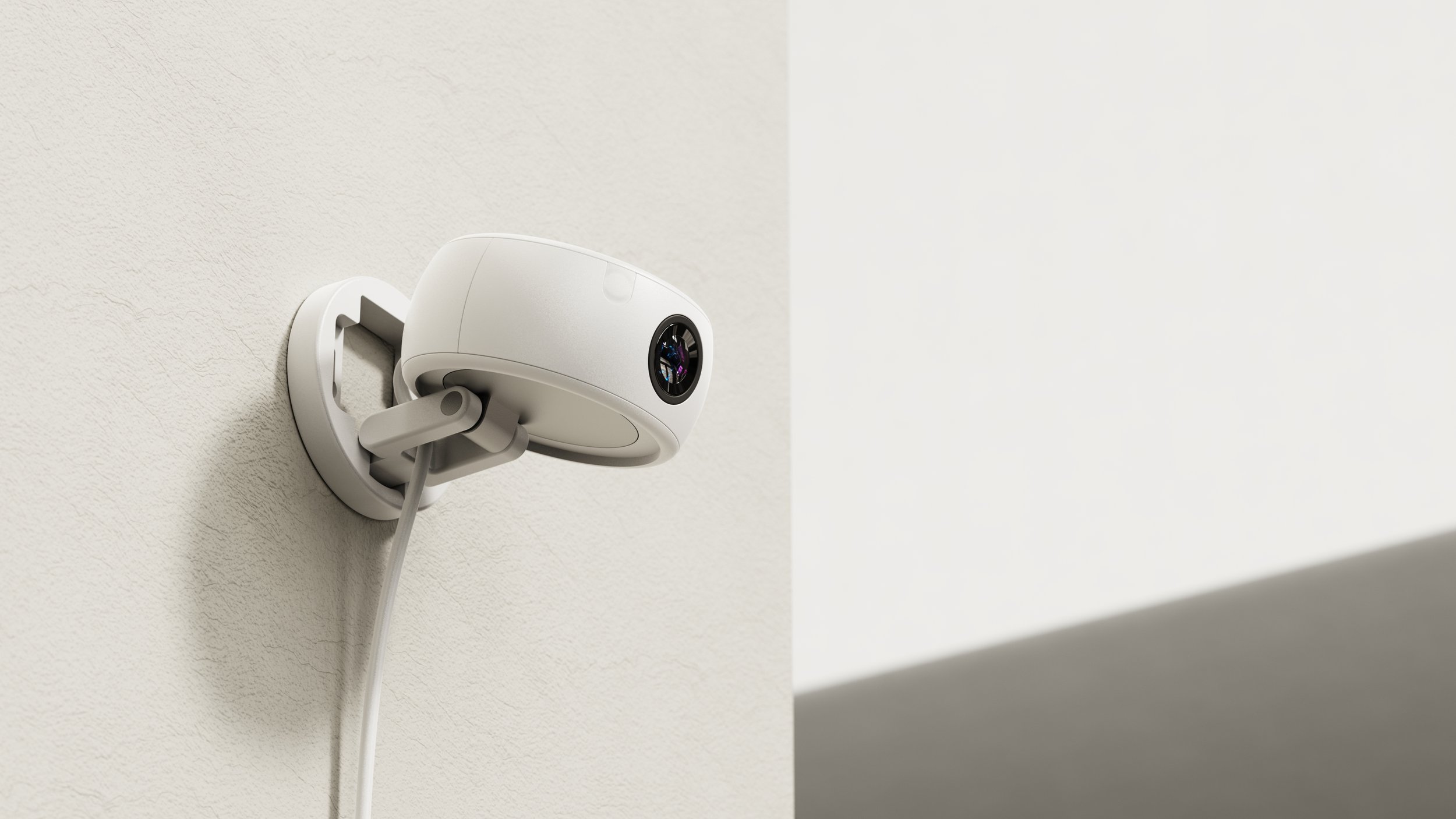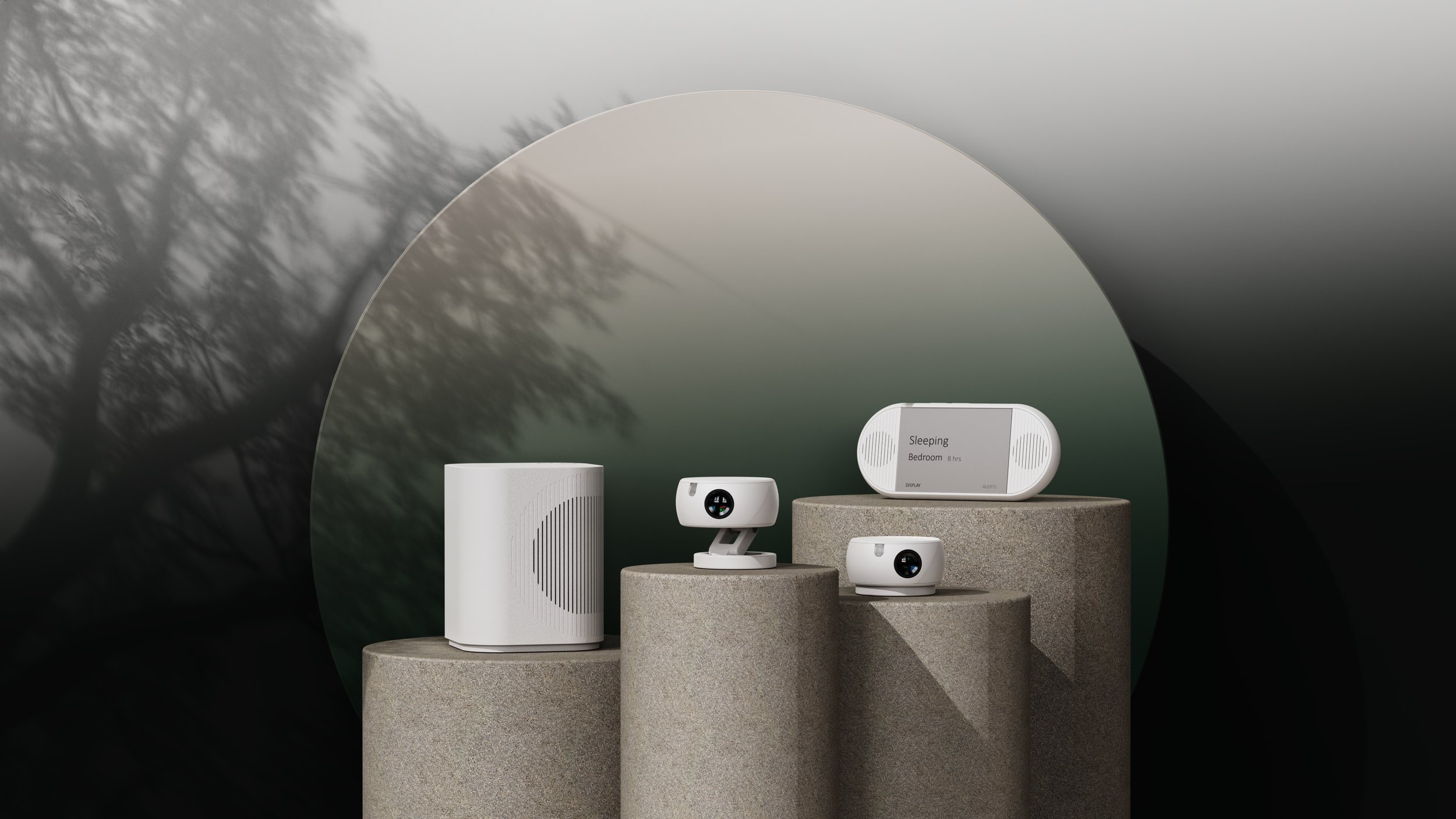
Dawnlight - LumiMate AI Dementia Monitoring System
2020-2021
DawnLight was a startup led by prominent Stanford professors and AI/ML scientists Fei Fei Li and Jia Li, Stanford research director Arnie Milstein, and backed by Sequoia, NVIDIA, Greylock Partners, and more. They focused on creating AI solutions that used computer vision in medical settings.
Since hospital products have lengthy development times, and have many regulations around them, DawnLight wanted to find a consumer facing in-home solution for their technology. Spatial Dynamics was asked to research, conceptualize, design, and prototype possible applications for their technology. The final product Spatial Dynamics pitched was called LumiMate, a dementia monitoring system.
The LumiMate AI Dementia Monitoring System was designed with the lifestyles and needs of dementia caregivers and patients in mind, resulting in a new innovative experience to help bring a peace of mind into the home.
Technology
Recent advancements in computer vision and tiny ML has made these technologies available on increasingly smaller devices. This allows for a whole new world of opportunity as we now have the ability to implement complex AI systems into smaller and more accessible offline devices.
LumiMate uses computer vision to translate actions it sees into text. While this technology is currently being used in certain hospitals to relieve the stress of overworked healthcare professionals, we believe computer vision has the potential to be implemented into the home setting, lightening the load for caretakers.
Current User Journey
One of the biggest pain points we identified when doing interviews with caretakers of dementia patients is that taking care of dementia patients is extremely stressful, and what both patients and caregivers desire the most is independence. We also discovered that the most critical times the caregiver needs to be aware of the patient is when the patient changes actions.
Market
Current solutions are poorly designed, intrusive, and are often hacked together with devices that do the bare minimum. Oftentimes, people are using products that are not designed specifically for the purpose of monitoring patients, so not all the capabilities that they need are available to them.
Personas
Oftentimes, family members take on the role of caring for a dementia patient. However, these caregivers also have their own lives to life, requiring a balance between caregiving and personal responsibilities. Both the patient and the caregiver value independence, alongside the assurance of the patient's safety, which provides peace of mind for the caregiver.
Research Insights
1.
By alleviating some of the burdens of the caretaker, we can give patients more independence and allow them to age in place longer.
Combating a aging diseases such as dementia is very emotionally draining for both the caretaker and patient.
2.
Caretaker should be notified when patient has an unmet need without the patient having to actively express their need.
Patients unwilling or unable to properly express certain emotions or feelings, resulting in needs not being met.
3.
Reducing the patient’s unpredictable actions reduces the caretaker’s anxiety, resulting in more freedom for the caretaker.
Because the patients are oftentimes unpredictable, caretakers try make everything more predictable by setting up a routine. Even with a routine, caretakers are still need to keep an eye on the patient due to the unpredictability, giving caretakers no peace of mind at any time.
4.
Design needs to be intuitive and practical, but also respectfully integrate into users’ lifestyles throughout the progression of the disease
Many devices are poorly designed, and many modern technologies are too abstracted for patients to understand.
5.
The data collected needs to be translated in an useful way for the caregiver to predict patient behavior and condition
It is hard for caretakers to keep track of the progression of symptoms, resulting in medical professionals getting inaccurate information on the patient’s current state of health.
Design Guidelines
Notifications
Caregiver is notified when a patient’s action needs the caregiver’s attention (ex: getting out of bed)
Notifications should use a range of senses, visual, audio, touch
Alarm system should grab attention but not be irritating
Communication
Caregiver audio communication to patient is easily accessible
Patient audio communication to caregiver is straightforward
Data Analysis
System can provide information to help the caregiver provide more customized care for the patient (ex: behavior patterns, sleep cycle, body metrics)
Monitoring
Caregiver should able to know quickly what the patient status is (Glanceability)
Caregiver can customize what actions they want to be alerted of.
Portability and Versatility
The system is easy to install in the home
Caregiver device is easy to carry around when caregiver is doing other tasks
Storyboarding Interactions
Storyboarding interactions was one of the most useful tools in understanding the functionality of the device system during development. Below are some of the example scenarios that were mapped out in the process.








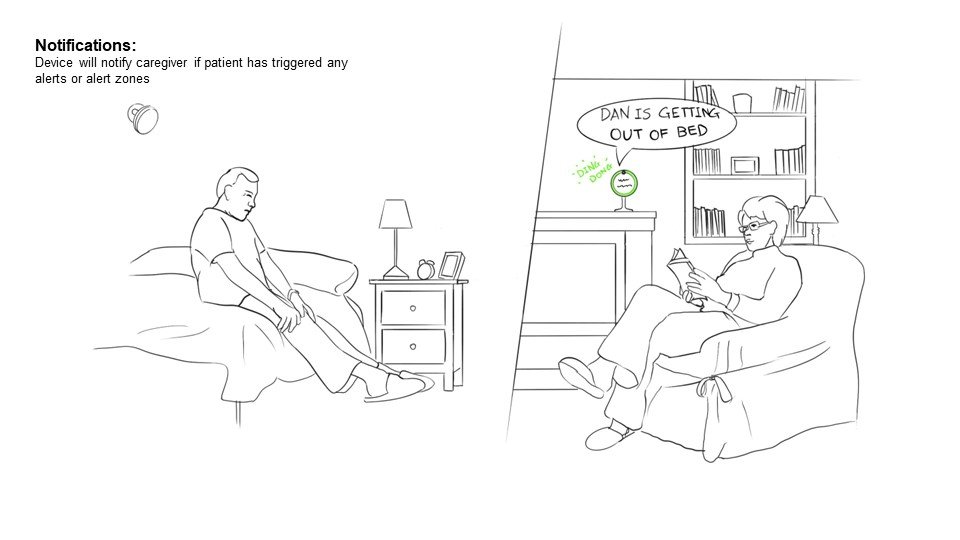
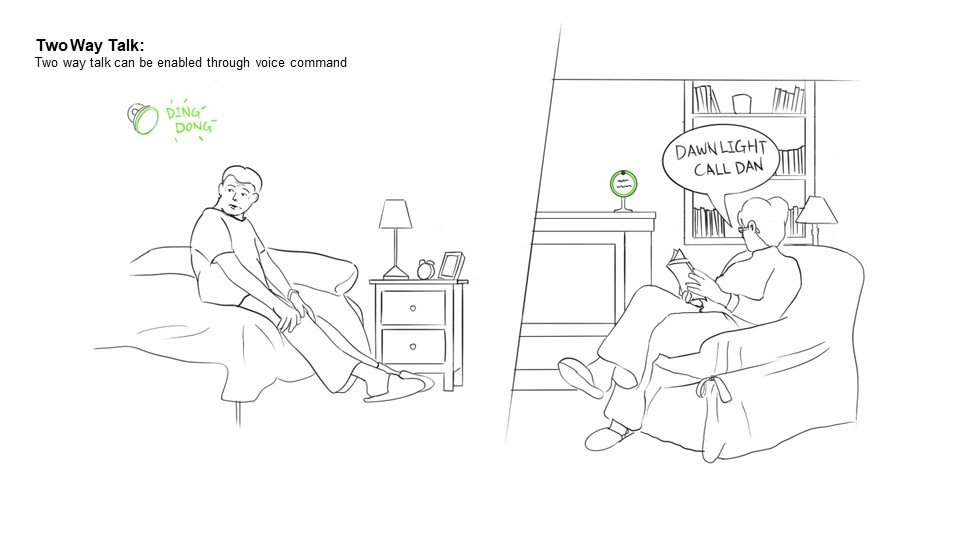
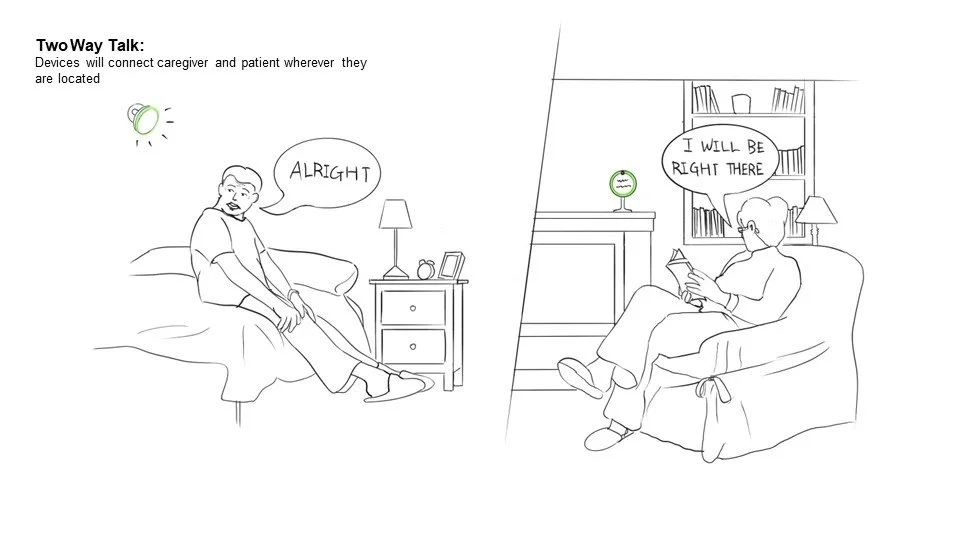
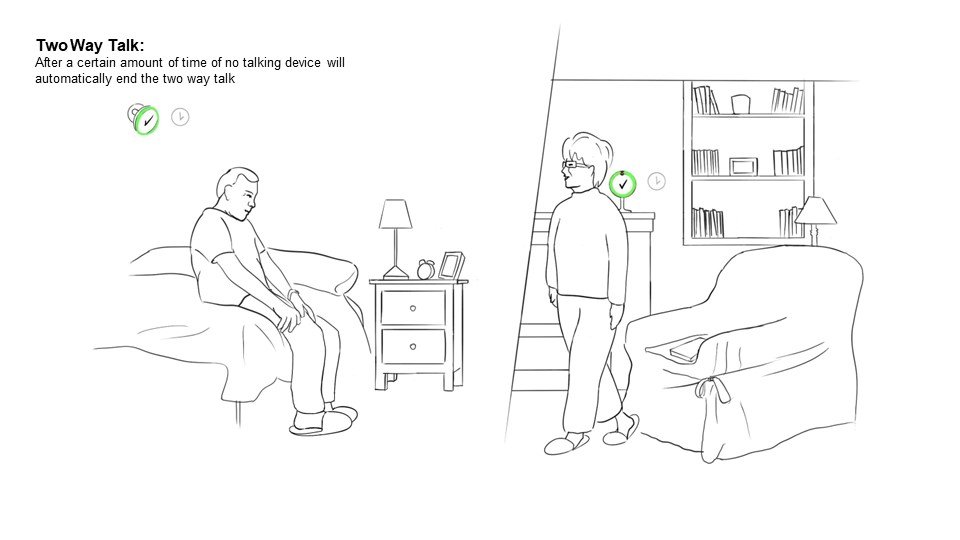
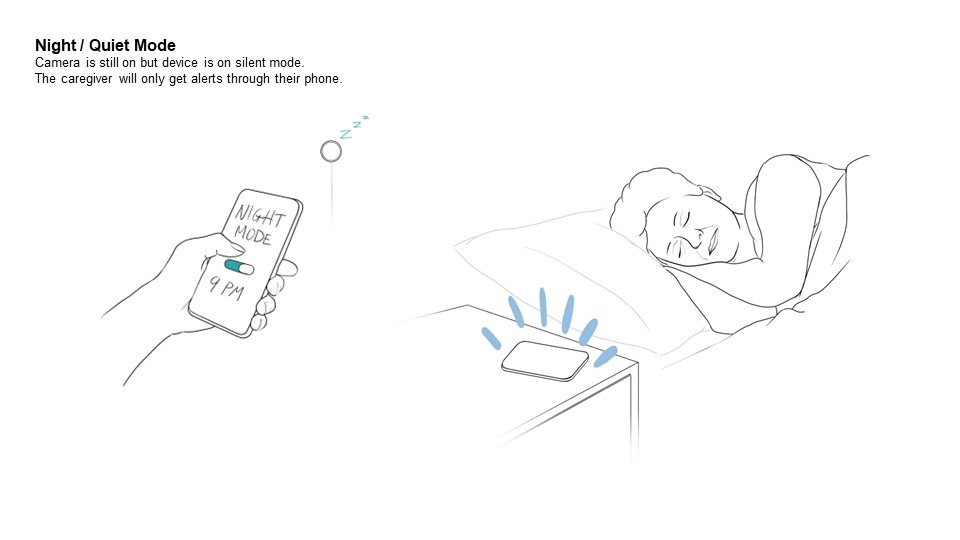
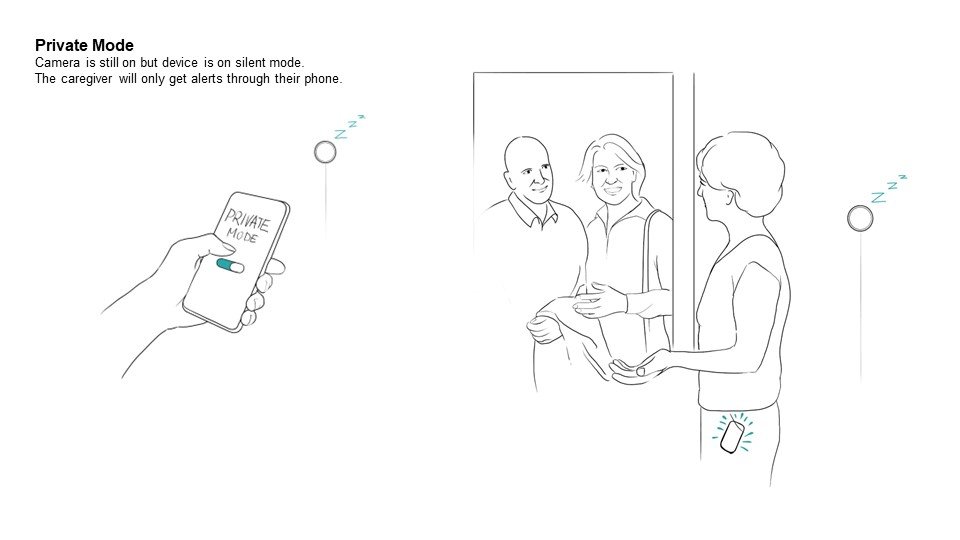

Final Product Images

